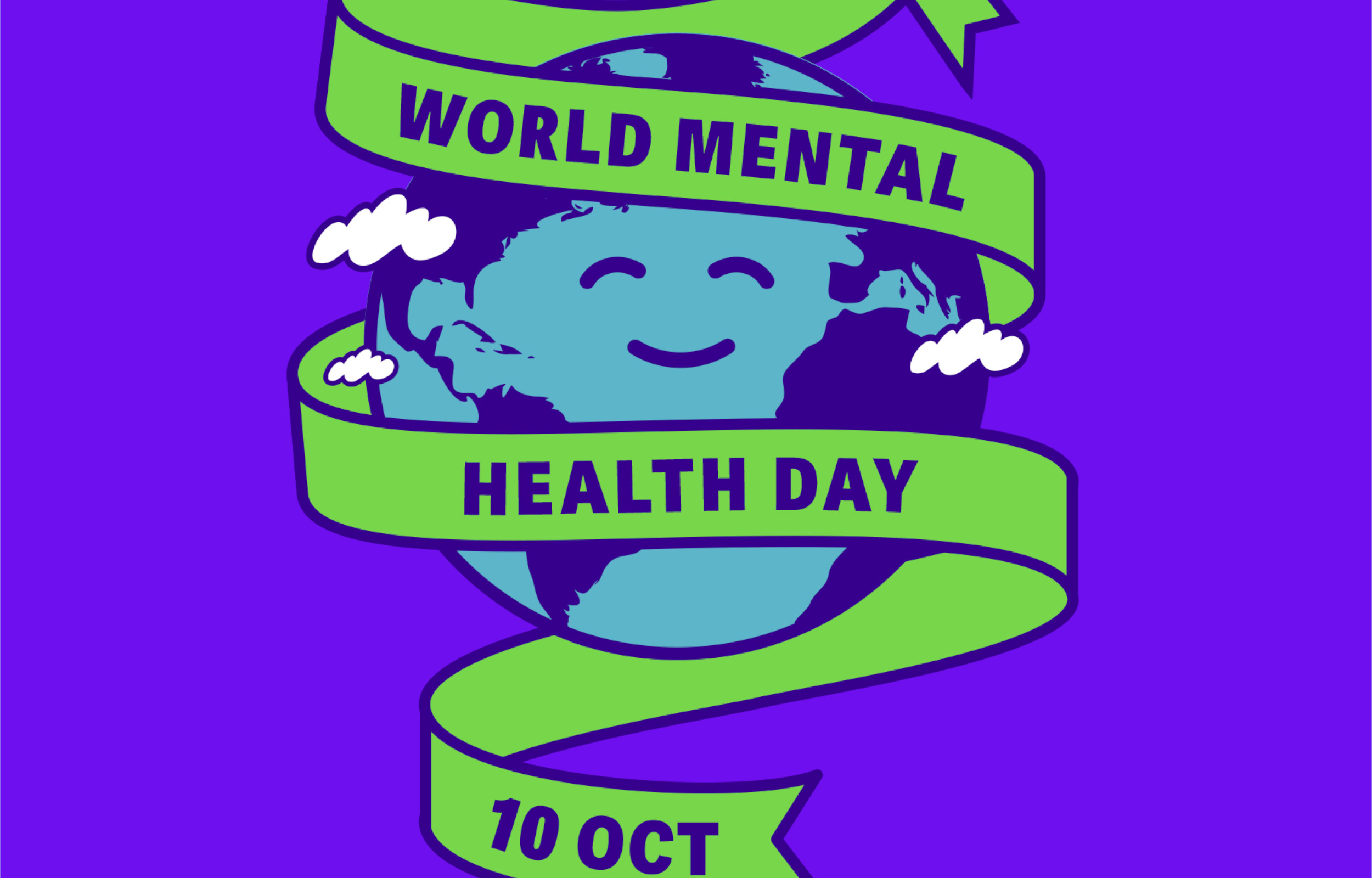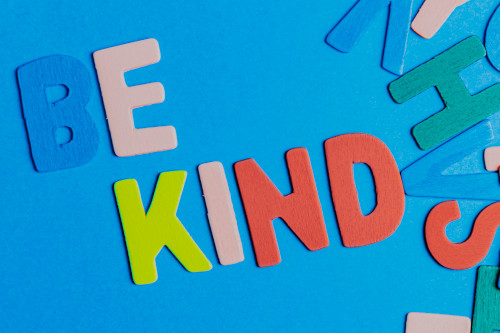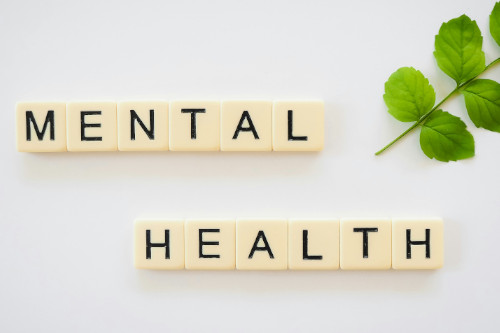Every year on the 10th of October, we mark World Mental Health Day. For me, it's a moment to pause and reflect. It's a day to check in, not just with myself, but with the people around me. I have been working in this field since before my prefrontal cortex was fully formed. My family is littered with professionals and so people sometimes seem confused at the fact that I have struggled, my kids have struggled and other family members have struggled. It is not an on/off switch. It is a continuum which is influenced by countless factors. I have helped family and countless friends into rehab and or hospital. I have needed formal help, both short term and long term. I have sadly attended many funerals where mental illness was the cause of death, including my father’s funeral. It's also a day to consider the bigger picture, to look beyond our own experiences and understand the silent struggles that millions of people face every single day. It's a conversation that has been in the shadows for far too long, and it's a privilege to be part of bringing it into the light.
This day was first observed back in 1992, an initiative of the World Federation for Mental Health [1]. The goal was simple but profound: to raise awareness, to educate, and to advocate against the social stigma that clings so stubbornly to mental illness. More than three decades later, that mission is more critical than ever.
The sheer scale of the challenge can be difficult to comprehend. According to the World Health Organisation (WHO), more than a billion people across the globe are currently living with a mental health disorder [2]. That's more than one in every eight of us. It's a staggering figure that cuts across all ages, all cultures, and all walks of life. Conditions like anxiety and depression have become the most common, representing a silent epidemic that constitutes the second-largest cause of long-term disability worldwide. As someone who remains engaged with conflict areas the figure of one in every eight is more like every person and particularly the young.
Tragically, for some, the struggle becomes too much to bear. In 2021 alone, an estimated 727,000 people died by suicide [2]. It remains a leading cause of death among young people, a devastating loss of life and potential that sends ripples of grief through families and communities. Despite global efforts, we're falling woefully short of the United Nations Sustainable Development Goal to reduce suicide rates by one-third by 2030. On our current trajectory, we'll achieve only a 12% reduction, a stark reminder of how much more work lies ahead.
A Generation Under Pressure
Perhaps nowhere is the mental health crisis more evident than among our young people. The statistics are genuinely alarming. Globally, one in seven adolescents aged 10-19 experiences a mental disorder, accounting for 15% of the global burden of disease in this age group [3]. What's particularly sobering is that half of all lifetime mental illnesses begin by age 14 [4], yet the majority of young people who need help don't receive it.
The trends are deeply concerning. From 1990 to 2021, the global incidence of anxiety disorders among those aged 10-24 increased by a staggering 52%, with particularly sharp rises in the 10-14 age group and in the period following 2019 [5]. In the United States, 42% of teenagers report experiencing persistent feelings of sadness or hopelessness, whilst 22% have seriously considered attempting suicide [4]. Youth mental health hospitalisations have increased by 124% from 2016 to 2022 [4], a figure that should give us all pause.
The gender disparities are striking. Girls are twice as likely as boys to experience depression, with three in five teen girls reporting feeling sadness every day for at least two weeks [4]. Among vulnerable populations, the statistics are even more heartbreaking. Native American teenagers have suicide rates nearly 3.5 times higher than the national average, whilst 14% of LGBTQ teenagers attempted suicide in 2022, including one in five transgender and nonbinary youth [4]. I suspect that in the current political climate some of those populations are going to see an increase rather than a decrease!
The Workplace: A New Frontline for Mental Health
This year, World Mental Health Day turns its focus to a place where most of us spend a huge portion of our lives: the workplace. The theme, "Mental Health at Work," couldn't be more timely. With 60% of the global population in employment, our jobs play a massive role in our overall wellbeing [6].
A supportive work environment can be a powerful protective factor for our mental health. It can provide a sense of purpose, community, and financial stability. But the opposite is also true. A toxic or high-pressure work environment, characterised by discrimination, excessive workload, or a lack of support, can be incredibly damaging. I wish I could say I was a shining example of self care and wellness, but this is definitely not the case. I try, but the realities of being in leadership positions in mental health companies which often respond to emergency situations means that my own self care is often very compromised and I have burnt out several times.
The statistics paint a concerning picture. A 2024 global survey by Ipsos across 31 countries found that 62% of people have felt stressed to the point where it had an impact on their daily life [7]. This isn't just a fleeting feeling of pressure; it's a level of stress that can be debilitating. For younger generations, the problem is particularly acute. Over half (54%) of Gen Z employees admitted to feeling so stressed they couldn't go to work in the past year, whilst 47% of Millennials reported similar experiences [7].
There's a strange paradox in how we approach our health. The same Ipsos report revealed that while three-quarters of us believe our mental and physical health are equally important, our healthcare systems don't reflect that reality. A significant 41% of people feel that physical health is prioritised over mental health, with only 13% believing the reverse is true [7]. We'd never tell someone with a broken leg to just 'walk it off,' yet that is often the implicit message sent to those struggling with their mental health.
The Cost of Silence
The economic consequences of this neglect are enormous. Depression and anxiety alone are estimated to cost the global economy a staggering US$1 trillion every single year, largely through lost productivity [2]. But the true cost can't be measured in pounds and pence. It's measured in lost opportunities, strained relationships, and the quiet erosion of human potential.
The disparity in care is stark and deeply troubling. In high-income countries, government spending on mental health can be as high as $65 per person. In low-income nations, it can be as low as four cents [2]. This isn't just a gap; it's a chasm. It means that in the world's poorest countries, fewer than one in ten people with a mental health condition receive any form of care, compared to over half in higher-income nations. Even in wealthy countries like the United States, only 51% of young people aged 6-17 with mental health conditions receive treatment [4].
Finding New Ways to Connect
Yet amidst these sobering statistics, there are glimmers of hope. Innovative community-based approaches are emerging that recognise something fundamental about human nature: we heal better together. One particularly inspiring example is the Men's Shed movement, which originated in Australia in the 1980s and has since spread to twelve countries worldwide [8].
The philosophy behind Men's Sheds is beautifully simple: "Men don't talk face to face, they talk shoulder to shoulder" [8]. These community workshops provide spaces where men can come together to create, converse, and connect whilst working on practical projects. It's an approach that recognises that not everyone finds it easy to sit in a circle and share their feelings—sometimes the most profound conversations happen whilst your hands are busy with meaningful work.
The results speak for themselves. Research by the UK Men's Sheds Association found that 97% of participants reported making new friendships in their community [9]. With over 50,000 men participating in Australia's 1,200+ sheds alone, this movement has become what many consider "one of the most powerful tools in addressing health and wellbeing" [8]. It's particularly effective in combating the isolation that many men face, especially after retirement, providing not just social connection but a renewed sense of purpose and community contribution. There are other hopeful examples like social proscribing, community gardens and green space etc. I tend to think that it will be community based action which will have the biggest impact rather than professional practice. If only we could get off those screens and down to an allotment.
A Path Forward
So, where do we go from here? The challenge is immense, but it is not insurmountable. Change begins with conversation. It begins with creating cultures, both in our communities and in our workplaces, where it's okay not to be okay. Where asking for help is seen not as a weakness, but as a sign of strength.
For our young people especially, we need to act with urgency. When we know that anxiety disorders now affect 31.9% of teenagers [4] and that suicide is the third leading cause of death among 15-29-year-olds globally [3], we cannot afford to wait. We need schools that prioritise mental health alongside academic achievement, communities that provide safe spaces for young people to connect and be heard, and healthcare systems that make mental health support as accessible as treating a physical injury.
Employers have a crucial role to play. This isn't about box-ticking exercises or token wellness initiatives. It's about meaningful change: training managers to spot the signs of distress, promoting a healthy work-life balance, and providing genuine, accessible support for those who need it. It's about making 'reasonable accommodations', like flexible hours or quiet spaces, as normal for mental health as they are for physical health.
Governments must also step up. We need to see mental health treated with the same urgency and funding as physical health. This means investing in community-based services, integrating mental health support into primary care, and reforming outdated laws to protect the human rights of those with mental health conditions.
On a personal level, we can all make a difference. We can educate ourselves. We can challenge stigma when we see it. We can listen without judgement. We can be the friend, the colleague, the family member who makes someone feel seen and heard. And we can support innovative community initiatives, whether that's a local Men's Shed, a workplace wellbeing programme, or simply creating spaces where authentic conversation can flourish.
This World Mental Health Day, let's make a collective promise. Let's promise to talk more, to listen more, and to support one another more. Let's work towards a world where mental health is a priority for everyone, everywhere, but especially for our young people, who are facing unprecedented challenges in an increasingly complex world. Because a healthy mind isn't a luxury; it's a fundamental human right. And in a world where over a billion people are struggling, that's a conversation we can no longer afford to postpone. If you see someone looking sad just say hello and check in. It can be that simple.
References
[1] World Federation for Mental Health. (n.d.). History. Retrieved from https://wfmh.global/who-we-are/history
[2] World Health Organization. (2025, September 2). Over a billion people living with mental health conditions – services require urgent scale-up. Retrieved from https://www.who.int/news/item/02-09-2025-over-a-billion-people-living-with-mental-health-conditions-services-require-urgent-scale-up
[3] World Health Organization. (2025, September 1). Mental health of adolescents. Retrieved from https://www.who.int/news-room/fact-sheets/detail/adolescent-mental-health
[4] Compass Health Center. (2024, May 8). Teen Mental Health Facts and Statistics 2024. Retrieved from https://compasshealthcenter.net/blog/teen-mental-health-statistics/
[5] Bie, F., et al. (2024). Rising global burden of anxiety disorders among those aged 10-24 years. PMC. Retrieved from https://pmc.ncbi.nlm.nih.gov/articles/PMC11651023/
[6] World Health Organization. (2024). World Mental Health Day 2024. Retrieved from https://www.who.int/campaigns/world-mental-health-day/2024
[7] Ipsos. (2024, October 15). Ipsos World Mental Health Day Report 2024. Retrieved from https://www.ipsos.com/en-id/ipsos-world-mental-health-day-report-2024
[8] Australian Men's Shed Association. (n.d.). Australian Men's Shed Association (AMSA) - Join Our Community. Retrieved from https://mensshed.org/
[9] UK Men's Sheds Association. (n.d.). Home | Men's Sheds Association | UKMSA. Retrieved from https://menssheds.org.uk/











